Love the gentle sweet-refreshing jasmine fragrance and would like to observe the development and abundant flowering of this plant? Then we suggest to consider the option of planting a jasmine shrub near the entrance or in the country area. And you can shelter home jasmine in the apartment - on the windowsill.
Content
Variety of Jasmine
Jasmine is a great deal of shrubs belonging to the family of oline. They can be loved by either upright. Some botany identified them in a separate family with the name "Jasmine". The conditions in which such a real jasmine successfully develops is subtropics and tropics. For maintenance in the rooms, the following types of jasmine are suitable: large-flowered, multi-flower, royal, holocal, indian (sambatic). In Asia (her warm belt), Australia and Africa there are 90 species of this plant, and only two species grow in Europe. There are plants on which the leaves are located on the branches oppositely, there are views and with a surname arrangement of sheet plates. The leaves in the jasmine are different - simple, all-strings, troops (with three dollars) or unparallers. Highlights are missing. A large, beautiful jasmine flower is represented by a small five-graded cup, which leaves a tubular whisk, expanding to the end of the type of saucer and slightly out of eight or five blades. Coloring can be yellowish, white or reddish. Inside the tube are placed on short threads two stamens. When ripening, the marking turns into the berry (leathery, connecting or fleshy). Typically, flowers can be seen at the ends of the twigs, much less often they are assembled in fixty inflorescences. In Russia (in the territory of the Crimea and the Caucasus), two species will grow wildly and cultivate them, let's call them:
- Jasmine Yellow - these small shrubs have the leaf trees, at the ends of the twigs are 2 or four yellow flower. If it is bred in a moderate belt of European countries, then be sure to protect before in winter.
- Jasmine White (otherwise - a real or medicinal) - This bouncing shrub is the leaves of cake, the fragrant flowers are white painting, and they are collected in the "sweatshirts". Dil place it in the territory of the Transcaucasia, in the South European countries and in Ost-India. Soils this kind is needed fertile, with a nutrient reserve. The site must certainly be well covered and warm the sunshine. Before the winter in Southern Europe, all good strong branches are cut off, after which they are added to the ground. In the spring they are again planted, after which they let new twigs. This species has two more varieties, which have leafs with yellow spots or white on the edge.
Gardeners are grown by another holocal jasmine - the Indian appearance, its yellow flowers are arranged by one.
But the most popular among Russian gardeners living in the middle lane, the so-called garden jasmine. Other of his names are Philadelphus, Chubuschnik. There is information that the first seedlings were brought to Russia and were presented with Romanovs from Germany. Next, the shrubs began to bloom in the parisades of those who were close to the royal court. Gradually, they spread in the gardens of a simple people. Jasmine Garden is attributed to the family of Hortensiev. The height of such a multiser bush from 80 centimeters to three meters. First, he grieves green shoots, then covered with a bark, the color of which is gray-brown or brownish. The leaves are intense-green, oval or egg-shaped. The root system of the bush of the urine type is located in the surface layer of the Earth.
The size of its white, yellowish or with a creamy flowers of flowers from 3 to 5 centimeters, they sit on the tips of the branches in one way or collected three to five pieces in the brush (or seven or ten). The crown is usually represented by four petals, less often five or six. On the form of a flower looks like a cross or a square. For such jasmine, the care is simple, because he is unpretentious, knows how to quickly adapt to the conditions of the medium in which it turned out to show winter hardiness.
There are now about 30 cultivated species, a huge number of varieties have been created. Some can pick up for accommodation on the lawn, others - near the wall of the house, benches, hammock, veranda, third - for the "living" sweat or a low border. There are varieties, the fragrance of flowers of which is intense. There are those grades that give a barely caught smell. Allergies can be recommended garden jasmine, elegant flowers that do not smell at all.
In the early grades, the flowers are revealed in the recent days of May, others have a little later - in June, and the late blooms can be enjoyed in July.
We will list only a few varieties and types of jasmine, which are especially popular and found in the gardens of Russians:
- Avenue (otherwise referred to as ordinary) - long-time winter-hard-resistant appearance, in the adulthood reaching the height of 200 centimeters. Its leaves under the influence of bright sunlight acquire a noticeable golden shade. Flowers forms a little, they are simple, their coloring cream. You can plant forms with fiber leaves ("Variagates") or with lemon yellowish (this is "Aurea").
- Schrenk - a bush is sprawling, up to three meters high, his bloom begins in the first days of June.
- "Gletcher" - the height of this spreader bush is not more than 200 centimeters. On the branches, the abundance of large flowers, that they even scold slightly. They are terry or semi-natural, with a sweet jasmine aroma, white-cream painting.
- "White Bouquet" - on a bush, whose height is up to 250 centimeters, painted large terry snow-white flowers, collected seven pieces in the brush.
- "Ballet of Motalka" - on a bush, the height of which is about 200 centimeters, looks unusually large flowers (semi-world or terry), in which a certain part of the petals are slightly twisted. It seems that the creicist-white wings of butterflies are so trembling.
- "Air landing" - straight bush shoots reaches a height of 150-200 centimeters. Flowers are white-cream, simple, their crown turns down, so they are compared with miniature parachutes. A wonderful strawberry fragrance comes from them.
- "Avalanche" - this bush, whose height is 120 centimeters, small leaves. Its flowers are small, in just a centimeter in diameter, but there are a lot of them, and they exude a strawberry fragrance. In winter, his twigs can be moderated. Received this variety was French Lemoan. Our compatriot N. Vekhov managed to improve the grade, resulting in a "snow avalanche", which shows a large winter hardiness and blooms early.
- "Yunnat" - on this bush, lush terry flowers of starred form are revealed for 30 days. In some conditions, the contents of the flower smell like vanilla, in others - strawberries.
- "Snowstorm" - during amazing flowering of this low bush (about 110 centimeters) so many snow-white flowers, which is not even visible to green foliage. The terry flowers are adorable, although they do not smell - the outer petals are widespread, slightly worn down, and in the middle a lot of narrow petals wrapped inside.
- "Kazbek" - a bush consists of powerful shoots, reaching the height of 170 centimeters. Long inflorescences consist of 15 lush terry flowers having a pure white color. Their fragrance is barely catching. Inside the flower there are wide petals, and outside are narrow.
- "Elbrus" - the bush reaches a height of 110 centimeters, it is covered with leaves painted in a dark green color, their edge is strongly joined. During flowering, the bush is similar to the top of the mountain, covered with clean snow, because on it 25 days the complex dense inflorescences are held, consisting of 15-21 flower, their painting white, they are thick, terry, the aroma is very weak.
- "Gnome" - "sprouting" of this spherical bustle of only 50 centimeters. The leaves of his small, their painting is yellowish-green, the colors do not give. It is very appropriate when designing borders and rocaries.
If you need low grades, you can recommend such: "Charm", "Dwarf", "Gnome", "Yunnat", "White Bouquet", "Moonlight", "Mountain Mantle".
Do you want terry jasmine, whose flowers have additional rows of petals? Then pay attention to the varieties: "Moonlight", "Arctic", "Komsomolets", "Alebaster", "Snowstorm", "Charm", "Kazbek", "Obelisk", "Salyut", "Pompon".
Landing garden jasmine
Jasmine shrubs wonderfully look in the garden with hydrangeas, lilac, dates, spirits, Weigelami, barberries, fades. And it would be nice to position the dolphiniums, peonies, phloxes, Lilyiks.
We have already mentioned that one of the advantages of Garden Jasmine is his unpretentiousness. These bushes will grow even in a shady spot, but then the flowers will be much smaller on them. And there is a possibility that several years of growth in such a place, his lower zone is barred at the bush. In all its glory, the bush will show himself if it is placed on a spacious place where a lot of sunlight will fall on it. If the jasmine bush lives at the northern wall of the building, it is likely that the flowers on it will be less disclosed. The soil is desirable easily sublinous, fertile, wet. Perfectly, if the closest buildings will ensure the protection of the bush from the laid northern winds.
It is much worse than jasmine on heavy clay, where even the water is soil fit close to the roots, or the soil of the sandy, completely dry, non-frozen. The new "tenant" can be placed in the garden in the spring or in the autumn time.
Screw the pit with a diameter of 60 centimeters, and about 50 centimeters depth. In advance, do the preparation of the substrate for filling it, mixing the humus (1 h.), Squeeze ground (2 hours) and river sand (1 hour). Make at the bottom of the porch hole from this substrate, moisten it, straighten the roots of your sapling and pour them off the remaining substrate so that the root neck will not carry. Now generously pour your new pet. And it is also recommended to fit the bush to form as a funnel-shaped deepening. And the bias to the base of the bush should be small. Then the moisture during the rains will be lingering near the roots zone. And the Garden Jasmine very much, if the layer of land with roots is constantly moistened. Suplice shoots can be shortened so that all forces he first gave to the growth of roots. In the soil, where many nutrients, on the branches of jasmine, flowers appear for more than ten years. If you have several jasmine plants, then in the future it was comfortable, leave the distance between them at least a meter. A little closer you can land to each other only dwarf molds.
After planting a jasmine Flowers on a developed bush, you will see only for the third season.
Further care of jasmine shrubs
Usually jasmine is quite atmospheric precipitation. But if there is no rain, and you see that the soil layer is dried around the bush, and the leaves are withering on the branches, then be sure to water it. So that the moisture remains longer in the soil, the priority circle is covered with a mulching organic - a compost, humus or peat. The layer of mulching material should be about 5-7 centimeters.
For the season, spend three tunches of the bush using a diluted korovyan. If it is not, then the mineral complex will come. By the way, when landing, in the pit you can throw 30 grams of "nitroposki". In early May, 10 liters of water can be poured annually under the bush, in which the urea and potassium sulphate pre-stirred (take them 15 grams), as well as superphosphate (its number is 30 grams).
For three year old months, try at least three times to make shallow loosening, during which you pull all the weeds near the bush.
When bloom is completed, then all drying inflorescences must be removed. Then, under the bush, pour a uniformly large glass of ash.
So that Croon looked neat, did not scatter, periodically shoots need to expose when Jasmine is already four years old. So you will also exercise and gradually rejuvenate your bush. Best and richly blooming shoots, whose age is less than seven years old. Therefore, the old branches cut off their foundation. Then the replacement shoots will grow from the root. The crown can be made oval, mushroom, round or low-end, it all depends on the description of the variety. Each year cut the shoots that break or affected diseases. Do not commit to the bush.
Old bush is rejuvenated by applying a radical way. With the arrival of spring, shorten four barrels up to 30 centimeters. All others - scold near the soil.
Many varieties of Philadelfus are well winter without any shelter. Even if they have a little frozen the tops of the branches, then after their spring trimming, the shoots quickly grow up. To insulate the root system, in the fall, throw it under the bush of the Earth's bucket from the compost pit. But the young jasmines need to cover the "non-book" late in the autumn and diligently.
In the jasmine garden can attack pests:
- tLL - she loves young leaflets;
- shelon leaf - he wants to drink juice from sheet plates;
- web tick - wounds parts of the plant with her cobweb.
If only individual leaflers or twigs are damaged on the pest bush, then try flushing them with a thick soap. If the lesions are significant, then do not do without insecticidal agents.
Reproduction of jasmine
Another advantage of this fragrant garden inhabitant is an opportunity easily and quickly breed a bush. Methods are several:
- dividing in September the graced adult bush;
- roasting threshold;
- stalling;
- capture of twigs (grain);
- seeds.
The most valuable varieties or giving terry flowers is better to multiply with cuttings. Wearing in the fall, and then cheer them on the plot or put in a box with sand, which put in such a room, where the temperature will be near the zero of degrees. When spring comes, then make a wand in the soil layer, put there under the tilt of the cuttings to the level of the upper pair of the kidneys and degenerate it soil. About five weeks later, rooting will happen.
Green cuttings jasmine is taken to multiply at the moment of flowering. After cutting (it is better to do it in the morning) for several hours (about ten), you can put in a jar with water, in which Korniner has been added. Then send them to a wet substrate (you can just sand) and cover the cap made of plastic bottle. Look at the shelter more often to clean the cuttings and moisturize the substrate.
Jasmine at home
To begin with, we characterize the types of jasmine, which flowers successfully cultivate at home:
- Sambak (Indian, Arabic, Arabian) - the plant forms long flexible shoots. So that it looks like a neat bush, these shoots are often trimmed. White terry flowers are revealed on it for almost all year round. They exude a fragrance and on the final flowering stage are slightly blushing. Flowers of this species in India are added to green tea.
- A multi-flowered is a liana, prone to rapid growth, which hesitates the support proposed on it. Her shoots grow complex small leaves. Gives pink buds dropped in spring and turn into small white "stars". The branches of this species must be pruning annually.
- Medicinal (large-flowered) - shrub, giving long shoots covered with small elliptic leaves. Flowers, similar to the stars, are formed on it from spring and before the arrival of September.
- Holocellular (winter) - is a small bush having downward shoots. In winter, part of the foliage plant loses, but in January and February there are flowers of bright yellow color appear on it.
- Royal is the owner of long oval leaves and in winter giving very large flowers (up to seven centimeters), but not smell.
So, if you purchased indoor jasmine, then the substrate for it is made from equal shares of deciduous land, clay-turf and fine sand.
If there is an opportunity, then place the pot with your jasmine on the windowsill window overlooking the East or West. When locating on the southern window, Jasmine will have to be dialed with a bright sun. On the northern window, many jasmine give few colors or they do not form them at all. In the winter months, it is desirable that the room temperature in the room is not raised above the mark of 20 degrees. Therefore, the premises where the jasmine is worthwhile, in winter they often ventilate. If the room is also warm as in the summer, then the irrigation mode does not change.
Homemade jasmine care includes such elements:
- Watering - it is carried out after the upper layer of the substrate in the pot. For him, necessarily distilled water and slightly acidified. In the summer months, and if the flower stands in winter in a hot room, then it is necessary to moisturize the soil. If the room is cool, then the amount of irrigation is reduced.
- Spraying the green mass - if indoors are hot and dry air.
- Transplantation - It is held annually if the plant is young. In adulthood, jasmine can be moved to larger vessels in three years.
- Trimming - for indoor jasmine, it is very important, because they grow long vacation. True shoots, the flowerfish is obtained by jasmine shrub. If the liana grows along the support, the trimming helps to avoid the latter of the lower part of the plants. Thanks to the trimming, the jasmine forms young side shoots, on which buds will soon be shown. If the plant is small, it is not cut off, but only pour the tops of the shoots - for a bunning and increasing the number of fragrant flowers. Sambak must be cut more often than other jasmine - no less than three times in a year.
- Upburn - is carried out during the formation of buds and flowering twice a month. At the same time, the mineral complexes are advisable to alternate with the organic.
If the home jasmine is contained in a hot room where the air is dry, then insect pests may appear, for example, solar cells, red spider ties or whiteflies.
Modify the existing indoor jasmine can be stalling and tanks. Cuttings need to cut off during the period when jasmine is actively growing. Cut them from the top of the shoots. Cut length from 10 to 15 centimeters. The main thing is that at least two intercosals be present on him. Cuttings for rooting can be put into the water that must be changed more often. Or immediately send them to a wet substrate compiled from equal fractions of river sand and leaf land. After a month and a half the cuttings should grow root.
If you want to root with the tanks, then choose one or two escapes and studs (or wire brackets) press them to the ground to the surface of the Earth, the pot set up. From the parent plant, while the escape does not cut off. And on the place where the escape to the earth will occur, make several scratches with a sharp object. Continue to care for an adult plant and moisturize the land in that pot, where the chains are attached. If everything succeeds, then young pigs will seem on the drains. When she will grow slightly, you can cut off the grain from the "mother."
Blooming jasmine causes not only admiration and other positive emotions. His flowers are able to ionize the room in which the plant is standing. Gentle fragrance, source, has a positive effect on the well-being of those in the room. This smell can remove the nervous voltage, soothes, it pauses, suppresses anger and aggression, derives from depression. To dream to be serene, calm, in eastern countries, jasmine flowers fill small pads and put them next to the main pillow.

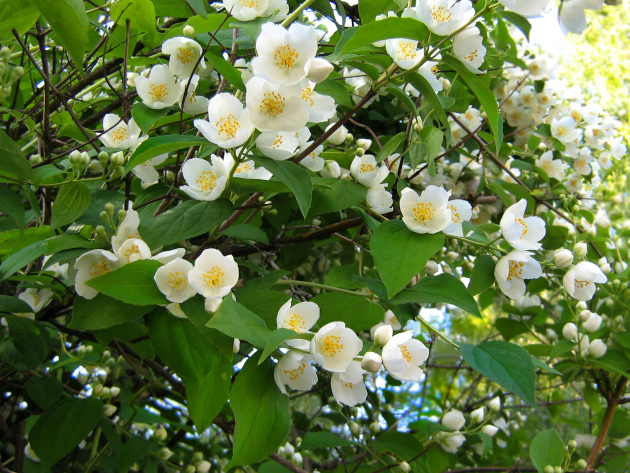
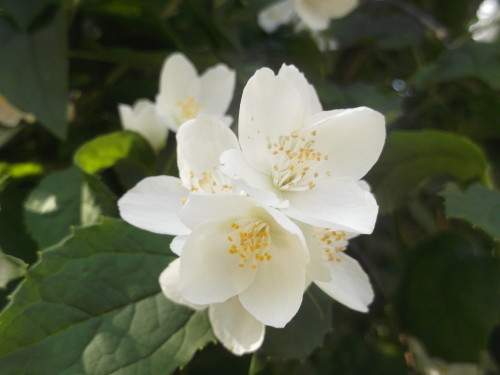
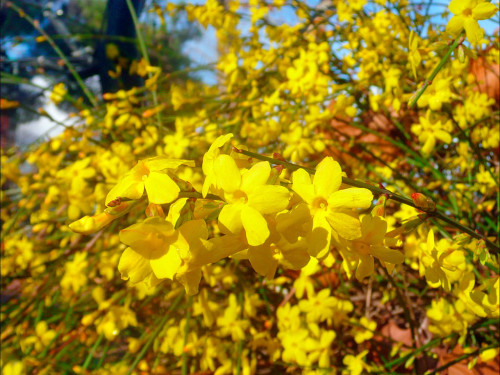
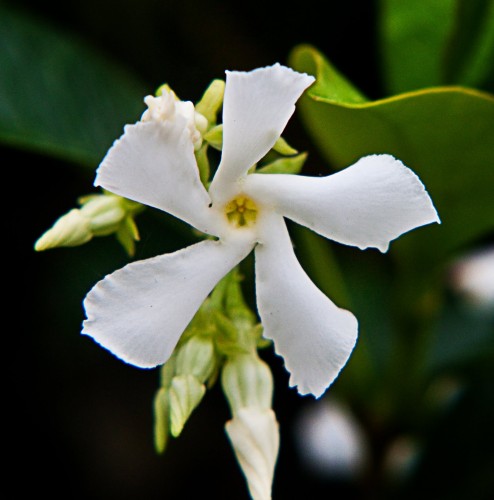
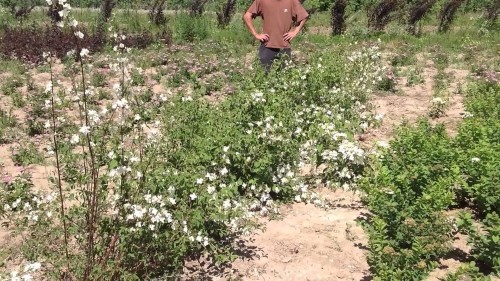
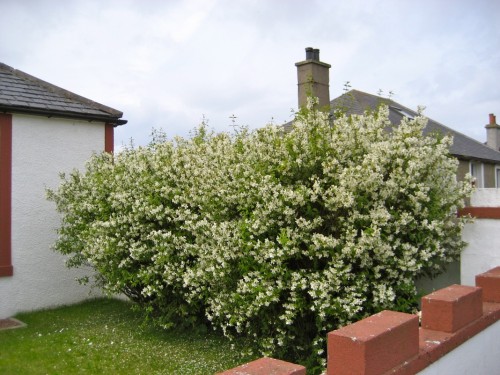
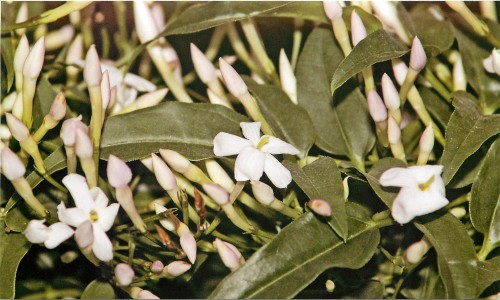
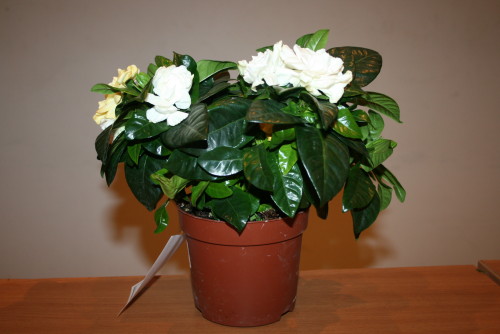
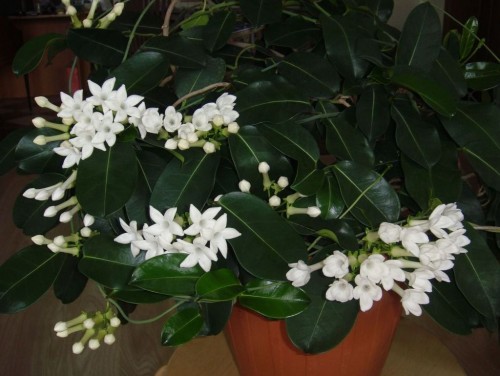












 Start a discussion ...
Start a discussion ...